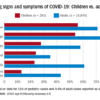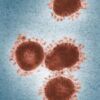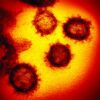News
SARS-CoV-2 escapes cotton, surgical masks of infected
April 8, 2020
All outer surfaces of masks used in the study were positive for SARS-CoV-2.
![1]()
Opinion
‘The kids will be all right,’ won’t they?
April 8, 2020
From a social standpoint, pediatric patients’ lives have been turned upside down.
![1]()
Opinion
Tips for self-care during the COVID-19 crisis
April 7, 2020
Shorter sessions more often are providing more comfort to some patients, said Dr. Eva Ritvo.
News
Nearly 24 tests for the novel coronavirus are available
April 7, 2020
Laboratories and clinics still face challenges that include shortages of tests, shortages of components such as reagents, and backlogs.
![1]()
News
Many children with COVID-19 don’t have cough or fever
April 7, 2020
The characteristic COVID-19 symptoms are not as common in pediatric patients, compared with adults.
![1]()
News
AAP issues guidance on managing infants born to mothers with COVID-19
April 7, 2020
Infants born to mothers with COVID-19 should be tested for the virus at 24 hours and, if still in the birth facility, at 48 hours after birth.
![1]()
News
Is protocol-driven COVID-19 respiratory therapy doing more harm than good?
April 6, 2020
“This is a kind of disease in which you don’t have to follow the protocol – you have to follow the physiology. Unfortunately, many, many doctors around the world cannot think outside the protocol,” said Dr. Luciano Gattinoni.
Article
Coronavirus on fabric: What you should know
April 6, 2020
Evidence suggests it’s harder to catch the virus from a soft surface, according to expert.
News
Neurologic symptoms and COVID-19: What’s known, what isn’t
April 6, 2020
COVID-19 symptoms may include encephalopathy, ataxia, and other neurologic signs.
![1]()
News
COVID-19 less severe in children, yet questions for pediatricians remain
April 6, 2020
Pediatricians may need to expand their use of telehealth and work to minimize unintended effects of school closures.





